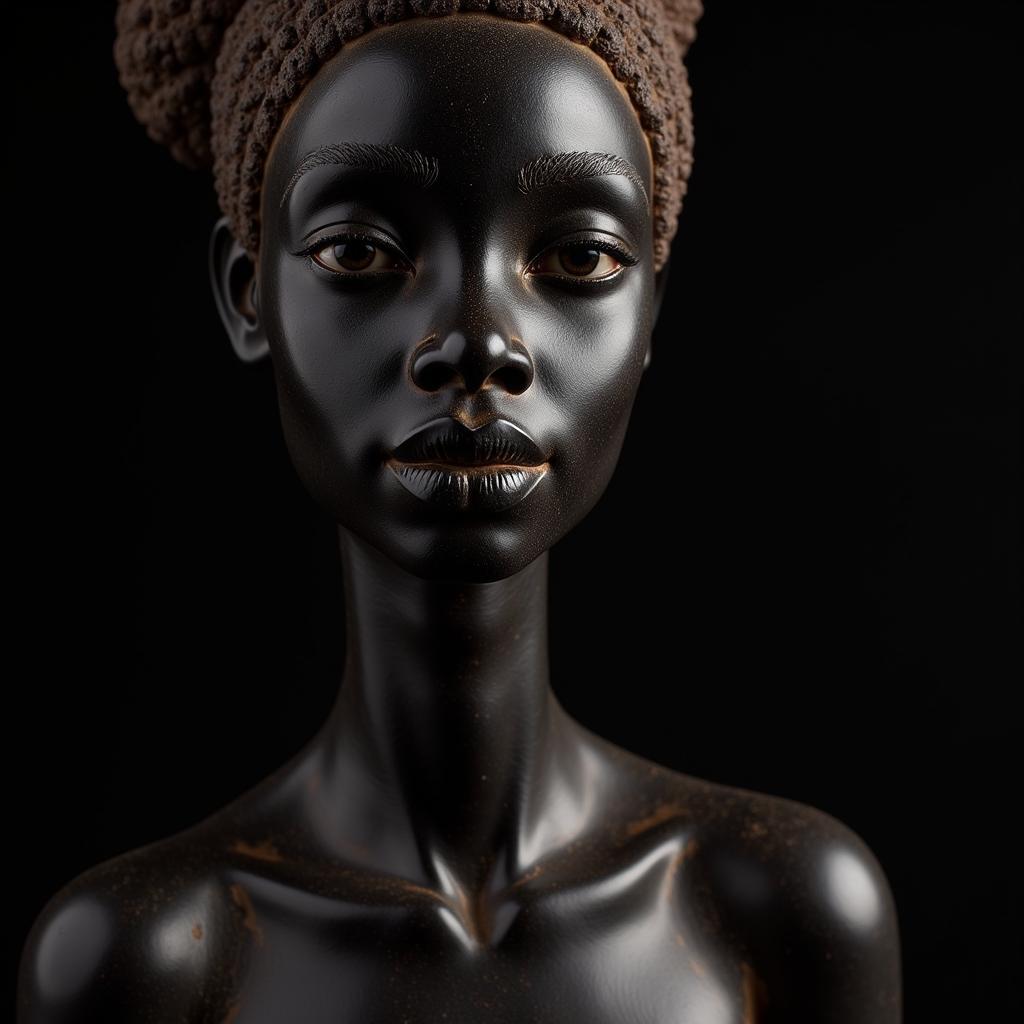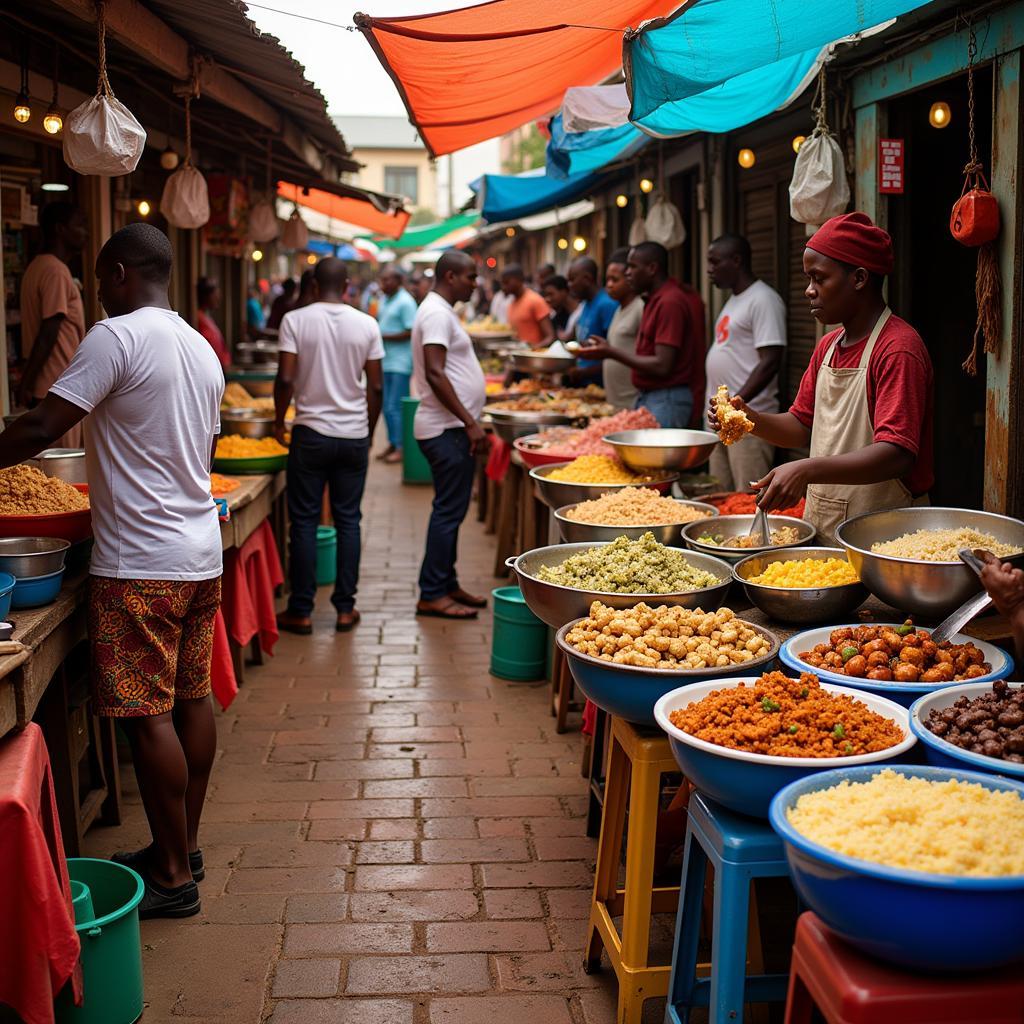Exploring the Rich History and Culture of African Ebony
African ebony wood, prized for its deep, lustrous black color, has played a significant role in African art, music, and cultural traditions for centuries. This article delves into the historical and cultural significance of African ebony, exploring its uses, symbolism, and the impact of its trade.
The Significance of African Ebony in African Cultures
African ebony, more specifically the heartwood of several Diospyros species, has been a valuable resource for many African communities. Its dense, durable nature makes it ideal for crafting tools, weapons, and musical instruments. Beyond its practical uses, ebony holds symbolic weight in various cultures, often representing power, prestige, and spiritual connection.
In some African traditions, ebony objects are believed to possess protective qualities. Amulets and carvings made from ebony are used in rituals and ceremonies, signifying a link between the physical and spiritual realms. Furthermore, the wood’s rich black color has been associated with elegance and sophistication, making it a sought-after material for decorative items and prestigious gifts.
Historically, ebony has been a crucial commodity in trade networks across the African continent and beyond. The demand for this precious wood has, unfortunately, led to overexploitation and concerns about sustainability. Today, efforts are underway to promote responsible harvesting practices and protect remaining ebony forests.
African Ebony in Music and Art
Ebony’s exceptional acoustic properties have made it a favored material for crafting musical instruments. Many traditional African instruments, such as xylophones, thumb pianos (mbira), and certain types of drums, incorporate ebony components. The wood’s density contributes to a resonant, rich tone that is integral to the unique soundscapes of African music.
Beyond musical instruments, ebony is a prominent material in African art. Skilled artisans carve intricate sculptures, masks, and decorative objects from ebony, showcasing their craftsmanship and artistic vision. These objects often depict important figures, myths, and cultural symbols, serving as both aesthetic expressions and historical records.
 African Ebony Sculpture of a Woman
African Ebony Sculpture of a Woman
The Future of African Ebony
The future of African ebony lies in striking a balance between its cultural and economic value and the need for conservation. Sustainable harvesting practices, reforestation efforts, and the development of alternative materials are crucial to ensuring the long-term survival of ebony forests and the preservation of the cultural heritage associated with this precious wood.
Furthermore, promoting awareness about the significance of African ebony in art, music, and cultural traditions is essential to fostering appreciation and supporting sustainable practices. By understanding the rich history and cultural value of African ebony, we can work towards a future where its legacy continues to thrive.
 African Ebony Forest Conservation
African Ebony Forest Conservation
Conclusion
African ebony remains a powerful symbol of African culture, its deep black hue and unique properties interwoven with centuries of tradition, art, and music. Protecting this precious resource requires a concerted effort to promote sustainable practices and raise awareness about its cultural significance. By valuing and safeguarding African ebony, we ensure that future generations can continue to appreciate its beauty and cultural importance.
FAQ
- What makes African ebony so valuable? Its dense, black heartwood is highly prized for its durability, beauty, and acoustic properties.
- What are some traditional uses of African ebony? It’s used to craft musical instruments, tools, weapons, and decorative objects.
- Why is ebony conservation important? Overexploitation threatens ebony forests and the cultural heritage associated with the wood.
- What are some sustainable alternatives to ebony? Other dark-colored woods, like bog oak and African Blackwood, can sometimes be used as substitutes.
- How can I support sustainable ebony practices? Look for certified sustainable ebony products and support organizations working to protect ebony forests.
Common Scenarios and Questions
- Scenario: A musician looking for an authentic African instrument made with ebony. Question: Where can I find reputable sources for authentic ebony instruments?
- Scenario: An artist wanting to carve with sustainably sourced ebony. Question: How can I verify the sustainability of ebony wood before purchasing?
- Scenario: Someone interested in learning more about African art and the use of ebony. Question: Are there museums or cultural centers that showcase African ebony art?
Further Exploration
Explore our other articles on African musical instruments, traditional African art, and sustainable forestry practices.
For further assistance, please contact us at Phone Number: +255768904061, Email: [email protected] Or visit our address: Mbarali DC Mawindi, Kangaga, Tanzania. We have a 24/7 customer service team.



